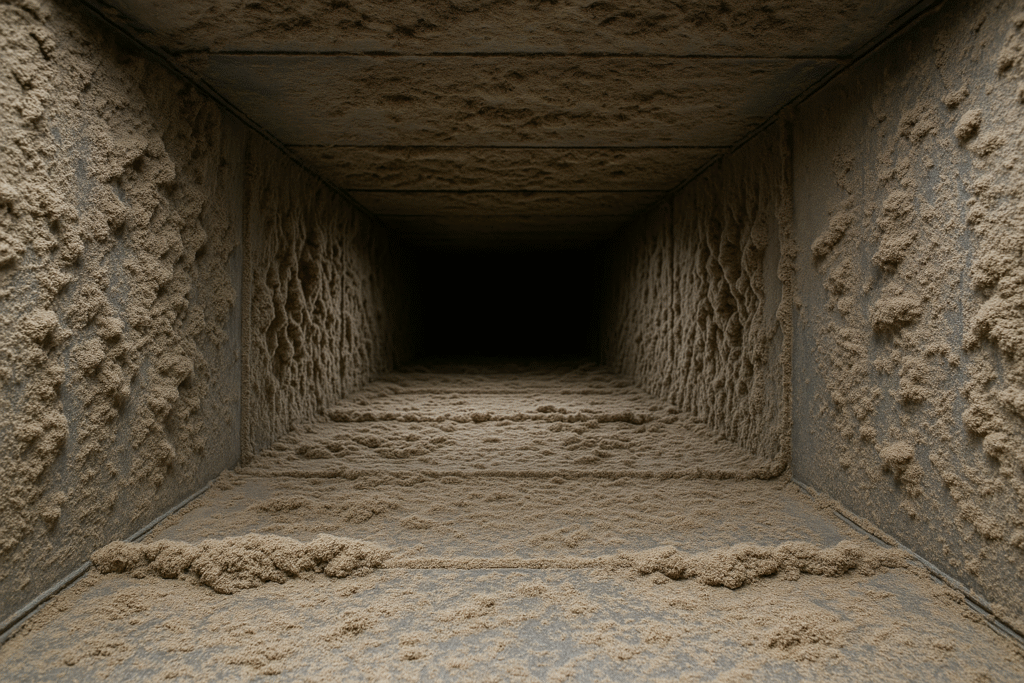A Source of House Dust

You clean, you vacuum, you dust — and just a few days later, that fine layer of dust is back again. So where does it come from? The truth is, household dust is made up of tiny particles from both inside and outside your home. Many of them are impossible to avoid, but understanding what causes dust can help you manage it better.
Common Sources of Dust in Your Home
-
- Skin Cells and Hair
Every person sheds millions of skin cells each day, which mix with hair and pet dander to form part of the dust you see collecting on furniture and vents. - Fabric Fibres
Your carpets, couches, bedding, and curtains slowly release tiny fibres every time they’re disturbed. These lint-like particles float through the air and settle on every surface. - Outdoor Dirt and Pollen
Opening windows or doors, walking inside with shoes, or letting pets in and out all introduce pollen, soil, and outdoor debris into your home. Once inside, it often settles in the ductwork and circulates through your HVAC system. - Cooking and Burning
Everyday activities like cooking, using a fireplace, or even burning candles release fine particles and smoke that cling to walls, ceilings, and vents. - Building Materials
Even your home itself contributes to dust. Microscopic particles from drywall, insulation, and paint slowly break down and become part of the air you breathe. In newer or recently renovated homes, construction dust can linger for months inside ducts and vents.
- Skin Cells and Hair
How Dust Circulates Through Your Home
Your furnace and air conditioner continuously move air through your duct system — and with it, dust and debris. Over time, these particles collect inside the ductwork and are blown back into your living spaces, creating a cycle of recirculated dust. Routine professional duct cleaning is the most effective way to stop that cycle.
Why Dusty Matters
Dust isn’t just unsightly — it can carry allergens, pet dander, and mold spores that trigger allergies, asthma, and respiratory irritation. Clean ductwork helps reduce these pollutants, improving indoor air quality and your family’s comfort.
How to Keep Dust Under Control
While you can’t eliminate dust completely, a few simple habits help minimize it:
-
- Replace furnace filters every 2–3 months.
-
- Vacuum regularly using a HEPA-filtered vacuum.
-
- Keep entry mats at all doors to trap outdoor debris.
-
- Limit open windows during high pollen seasons.
-
- Schedule a professional duct cleaning every 3–5 years, or sooner if you’ve recently renovated or noticed visible dust around vents.
Breathe Easier with Power Vac
At Power Vac, we specialize in removing the dust you can’t see — deep inside your ducts, vents, and HVAC system. With over 58 years of experience and NADCA-certified technicians, we deliver professional, transparent service with no hidden fees or surprise upsells.
Cleaner ducts mean cleaner air, better efficiency, and a healthier home environment.
Learn more or book your next cleaning at www.powervac.ca.



